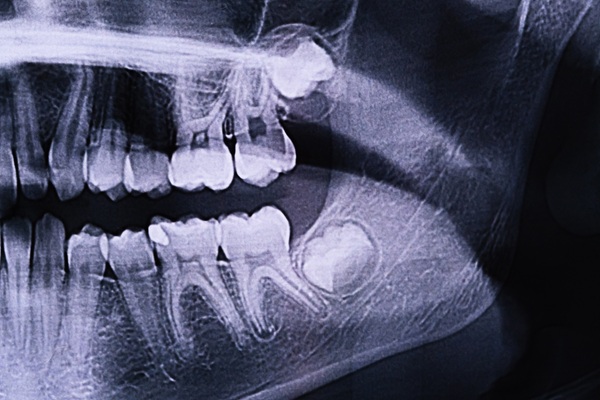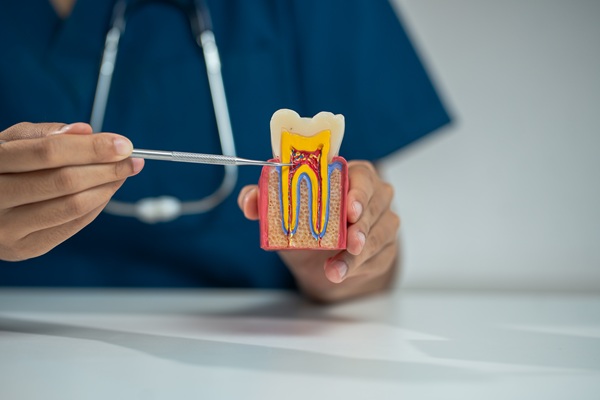Let’s face it – a trip to the dentist’s office isn’t high on anyone’s list of favourite things to do. Now, imagine being told you need a tooth extraction. Suddenly, the usual dental visit becomes a bit more stressful. Dentists, despite frequently performing tooth extractions, aren’t exactly thrilled about it either. It is their reserved last resort, a decision made with great caution and consideration. So, if the thought of parting ways with your tooth has you feeling a bit on edge, you’re not alone. Join us as we explore the types of tooth extraction and the recovery techniques after undergoing the procedure, making your dental visit a little less stressful.
When is Tooth Extraction Necessary
While dentists strive to preserve natural teeth whenever possible, there are several situations where tooth extraction may be necessary. Some common reasons include:
- If the tooth is extensively decayed or damaged and cannot be restored with dental fillings, crowns, or other treatments, extraction may be necessary.
- Advanced stages of gum disease can result in tooth instability due to the deterioration of supporting tissues and bone. Extraction may be recommended to curb the progression of the disease and maintain oral health.
- Traumatic injuries, such as a broken or fractured tooth due to an accident or injury, may require extraction if the tooth cannot be effectively repaired.
- If your mouth is crowded, your dentist might suggest extracting a tooth to create the necessary space for proper tooth alignment, especially in the context of orthodontic treatments.
- Impacted or improperly emerging wisdom teeth can cause pain, swelling, and potential damage to adjacent teeth. In such cases, extraction may be the prudent choice to alleviate discomfort and prevent further issues.
- If a root canal treatment proves unsuccessful or if persistent infection poses a risk, extraction may be recommended to prevent the spread of infection to nearby teeth and surrounding tissues.
Types of Tooth Extraction
While dentists prioritise exploring alternative treatments, extraction becomes a practical solution in cases where preserving the tooth could compromise your overall dental health. As such, there are two primary types of tooth extraction: simple extraction and surgical extraction:
Simple Extraction
This type of extraction is performed on visible teeth that are easily accessible and can be removed without extensive surgical procedures. Dentists use a local anaesthetic to numb the area around the tooth before employing an instrument called an elevator to loosen the tooth. Subsequently, dental forceps are utilised to gently remove the tooth. Simple extractions are common for teeth that are fully erupted, such as damaged or decayed teeth.
Surgical Extraction
Surgical extraction is a more complex procedure usually reserved for teeth that are not easily accessible or have not fully erupted, such as impacted wisdom teeth or broken teeth beneath the gumline. It may also be necessary for teeth with complex root structures or for individuals with specific medical conditions. Surgical extractions often involve making a small incision in the gum tissue to access the tooth. In some cases, the tooth may need to be sectioned into smaller pieces for easier removal.
The type of extraction required depends on factors such as the tooth’s location, condition, and accessibility. Your dentist will conduct a comprehensive oral examination with X-rays to assess these factors, choosing the most suitable method to ensure a gentle and stress-free experience. Regardless of the type of extraction, dentists at Bellevue Hill Dental prioritise your comfort and offer a range of sedation and anaesthesia options to minimise pain and discomfort during the procedure.
Related: Is Tooth Extraction Painful? Procedure and Pain Management Options
Post-Extraction Procedure
After the tooth extraction, your dentist will ensure the gum socket is clean. If needed, stitches may be used to close the extraction site. You can expect some bleeding initially, for which your dentist will provide gauze to bite down on. Post-extraction, as the anaesthesia wears off, you may experience pain and discomfort, accompanied by potential swelling. Depending on your case, your dentist may prescribe antibiotics, pain relief medication, or recommend over-the-counter options to facilitate a smoother recovery.
Tips for a Successful Tooth Extraction Recovery
The recovery time after undergoing tooth extraction can vary depending on factors such as the complexity of the extraction, the number of teeth removed, and your individual healing abilities. In general, it takes about 1 to 2 weeks for the wound to heal.
Here are essential tips to facilitate a smooth recovery:
- Avoid vigorous physical activities and exercise for at least the first 24 hours. Strenuous activities can increase blood flow to the extraction site and may lead to bleeding and discomfort.
- Use an extra pillow to elevate your head while sleeping for the first few nights. This can help reduce swelling and promote better blood circulation.
- Refrain from smoking and limit alcohol intake during the recovery period. Both can interfere with the healing process and increase the risk of complications.
- Mix about half a teaspoon of salt in a cup of warm water and rinse your mouth gently after the first 24 hours. This helps keep the extraction site clean and promotes healing.
- Apply a cold compress or ice pack to the outside of your cheek for the first 24 hours, especially if you experience swelling. Be sure to use a cloth or towel to protect your skin from direct contact with the ice.
- When cleaning your teeth, use a soft toothbrush and avoid the extraction site. You can also gently clean the surrounding area with a moist cotton swab.
- Steer clear of hot foods and beverages during the initial days of recovery. Stick to lukewarm or cooler options to prevent irritation to the extraction site.
- Drink plenty of water to stay hydrated. Proper hydration supports the healing process and helps flush out any residual anaesthesia or medications from your system.
- If your dentist has prescribed antibiotics, complete the full course even if you start feeling better before the medication is finished. This helps ensure the infection is fully treated.
Lastly, make sure to follow any specific post-operative care instructions provided by your dentist. This includes guidance on managing bleeding, taking prescribed medications, and avoiding certain foods and activities. If you have any concerns or experience unusual symptoms during your recovery, promptly contact your Bellevue Hill dentist for guidance.
For more insights on when you can resume normal activities after tooth extraction, read our comprehensive blog: When Can I Resume Normal Activities After Tooth Extraction?
Experience Gentle Dental Care with Bellevue Hill Dental
Removing your natural tooth is a decision we don’t take lightly. It’s a path we tread only when a tooth extraction becomes essential to safeguard the health of your teeth and ensure your overall oral well-being. As such, we recognise the gravity of such recommendations and are here to provide compassionate care throughout the process. Following the extraction and recovery period, our dental team may recommend suitable options to replace your missing tooth. Whether considering dental implants, crowns, bridges, or other solutions, we tailor our approach to your unique needs, ensuring a seamless transition to a complete, beautiful and pain-free smile.
If you are facing the prospect of tooth extraction and have questions or concerns regarding the procedure, we encourage you to book an appointment with us and we’ll happily guide you towards the personalised and gentle care you deserve.




